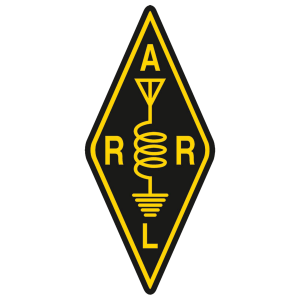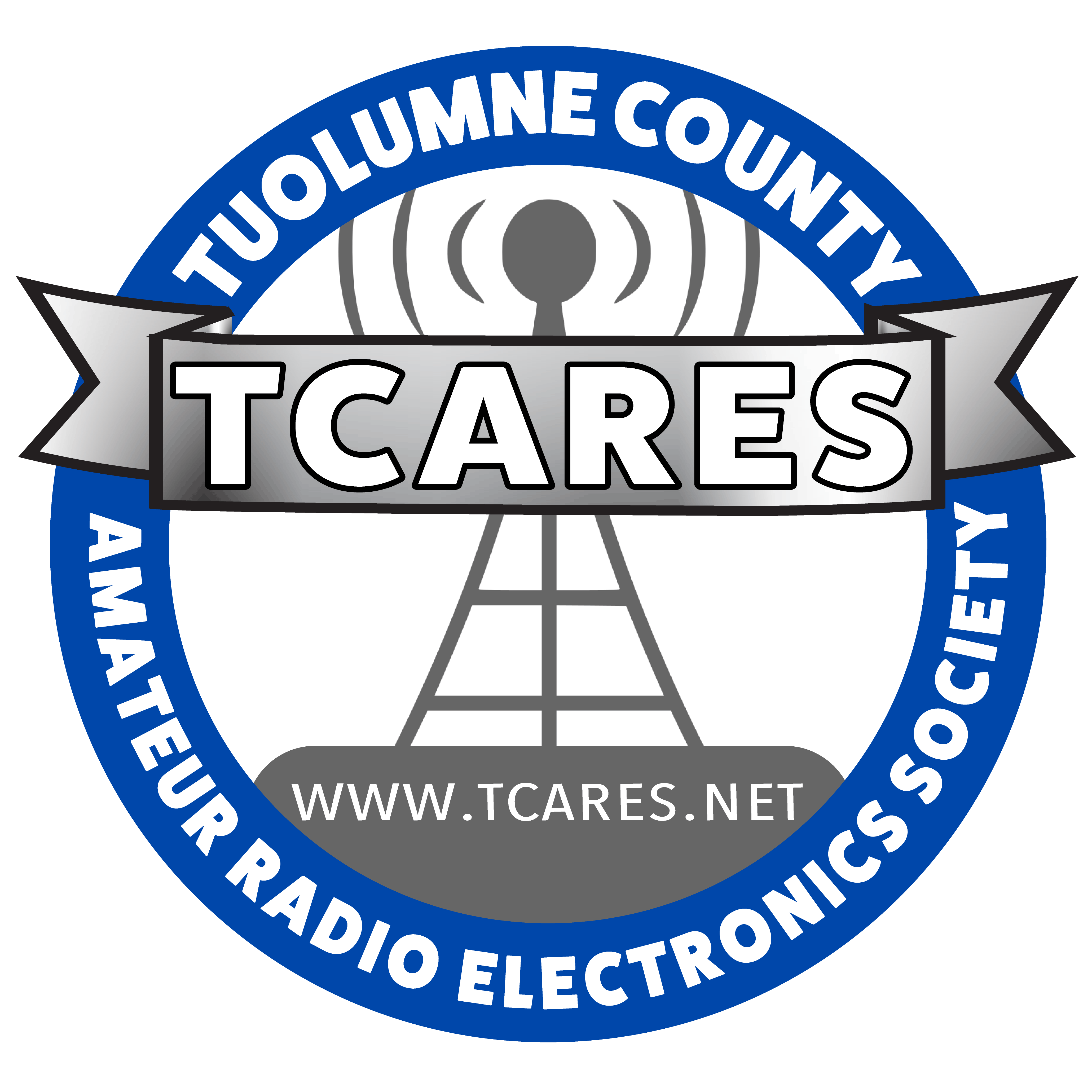OUR PURPOSE
It shall be our purpose to further the exchange of information and cooperation between members, to promote radio knowledge, fraternalism and individual operating efficiency and to conduct club programs and activities to advance the general interest and welfare of Amateur Radio in the community.
TCARES ACCOMPLISHMENTS
The TCARES membership provides communications assistance with fires, floods, search & rescue, and health & welfare message assistance to the Red Cross, without pay, using their own equipment, usually in twelve hour shifts. They have also provided voice and digital communications on amateur radio frequencies to assist California Department of Forestry and Forest Service officials with tactical communications, alleviating congestion of over-burdened OES radio systems.
Essential supplemental radio coverage was provided by TCARES to coordinate efforts during the A-Rock Complex, Moccasin, Ruby, Old Gulch, Creek and Ackerson Complex Fires. The club is on call around the clock to the Tuolumne County Office of Emergency Services and under the Direction of the OES, assisted other counties during the 1997 floods. Amateur mobile communications have supported public service for road emergencies and access to 911. Numerous hours are devoted in support of local community events such as the Jamestown, Old Mill and Old Ville Runs, Field day, Rail Town days, and expositions at schools.TCARES provides public service and emergency communication for Tuolumne County through agreements with many local agencies (CDF {VIP Program}, USFS, NPS, Red Cross, Sheriff’s office, Office of Emergency Services, etc.).
Tcares Members may be requested to provide Communications for anything from Walk-A-Thons to demonstrations of Amateur Radio Capabilities to Assisting in “declared” Emergency Situations. For any situation which is NOT a “declared” Emergency Situation, TCARES members respond as individual club members, ARES members or volunteer members of the particular agency which initiated the call out. (eg. the VIP communication section of the CDF )
TCARES / Tuolumne County RACES Operations Plan
When activating TCARES members for RACES operation, the County OES Coordinator or a responsible County Official will place a call to the RACES Radio Officer (RO), or any Assistant Radio Officer (ARO).
Command Procedure in Response to Activation
1. Upon receipt of notification of activation from the County OES Coordinator or a responsible County Official, the first RO or ARO contacted will act as the RO for purpose of this plan until and unless relieved.
2. The RO, using the RO Operations Checklist, will make an initial evaluation of the requirements vs. capabilities.
3. The RO will next begin a call-up of of the RACES members, make initial assignments, assign a frequency or repeater for the Service Network and confirm same to the County OES Coordinator or a responsible County official.
(RACES will typically be requested to provide communication support at the Incident Command Post (ICP), County Emergency Operations Center (EOC), County Administration Center and Evacuation Centers.)
4. When the RO feels Tuolumne County RACES resources will be depleted, and that we will have to turn to other RACES units for assistance via mutual aid. The RO must request mutual aid through the County OES Coordinator.
Operator Call-out Response
Amateur Radio operators should NEVER self dispatch to any incident.
Upon being alerted that an emergency exists, you should check into the emergency net frequency, advise as to your availability and be guided by the RO or Resource Coordinator’s decision as to your assignment or standby status.
ARES and RACES
Although RACES and ARES are separate entities, TCARES advocates membership in both groups whenever possible. An ARES group whose members are all enrolled in and certified by RACES can operate in an emergency with great flexibility. Using the same operators and the same frequencies, an ARES group also enrolled as RACES can “switch hats” from ARES to RACES and RACES to ARES to meet the requirements of the situation as it develops. For example, during a “non declared emergency,” ARES can operate under ARES, but when an emergency or disaster is officially declared by a county, state or federal authority, the operation can become RACES with no change in personnel or frequencies.
What is RACES?
RACES, administered by local, county and state emergency management agencies, and supported by the Federal Emergency Management Agency (FEMA) of the United States government, is a part of the Amateur Radio Service that provides radio communications for civil-preparedness purposes only, during periods of local, regional or national civil emergencies. These emergencies are not limited to war-related activities, but can include natural disasters such as fires, floods and earthquakes.
As defined in the rules, RACES is a radiocommunication service, conducted by volunteer licensed amateurs, designed to provide emergency communications to local or state civil-preparedness agencies. It is important to note that RACES operation is authorized by emergency management officials only, and this operation is strictly limited to official civil-preparedness activity in the event of an emergency-communications situation.
Operating Procedure
Amateurs operating in a local RACES organization must be officially enrolled in the local civil-preparedness agency having jurisdiction. RACES operation is conducted by amateurs using their own primary station licenses, and by existing RACES stations. Operator privileges in RACES are dependent upon, and identical to, those for the class of license held in the Amateur Radio Service. All of the authorized frequencies and emissions allocated to the Amateur Radio Service are also available to RACES on a shared basis. But in the event that the President invokes his War Emergency Powers, amateurs involved with RACES might be limited to certain specific frequencies (while all other amateur operation could be silenced).
While RACES was originally based on potential use for wartime, it has evolved over the years, as has the meaning of civil defense (which is also called civil preparedness), to encompass all types of emergencies. While operating in a RACES capacity, RACES stations and amateurs registered in the local RACES organization may not communicate with amateurs not operating in a RACES capacity. (Of course, such restrictions do not apply when such stations are operating in a non-RACES–such as ARES–amateur capacity.) Only civil-preparedness communications can be transmitted. Test and drills are permitted only for a maximum of one hour per week. All test and drill messages must be clearly so identified.
For Local Amateur RACES information Please Contact:
WB6GGY Phil Fish Tuolumne County RACES Radio Officer
For additional information contact: Tuolumne County OES at: 209-533-5511
The Amateur Radio Emergency Service (ARES) consists of licensed amateurs who have voluntarily registered their qualifications and equipment for communications duty in the public service when disaster strikes. Every licensed amateur, regardless of membership in ARRL or any other local or national organization, is eligible for membership in the ARES. The only qualification, other than possession of an Amateur Radio license, is a sincere desire to serve. Because ARES is an amateur service, only amateurs are eligible for membership. The possession of emergency-powered equipment is desirable, but is not a requirement for membership.
The above information is provided by the ARRL Emergency Communications Division
For more ARES information, Please Visit The ARRL Website

